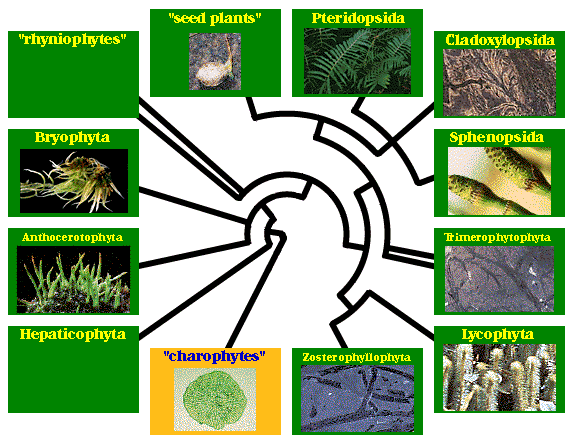



Plantae: Systematics
Move deeper into the systematics of plant groups by selecting one of the boxes containing a picture!






Plants have chlorophyll and an alternation of generations. They differ from the "green algae" in that the young sporophyte -- or diploid plant -- begins its development within the tissues of its parent gametophyte --or haploid plant. They also differ in that the sporophyte and gametophyte are heteromorphic, that is the two generations look and develop differently from each other.
The plant groups shown in this cladogram, except for the "seed plants", all have a free-living independent gametophyte which nurtures the young sporophyte. In the "bryophytes" (Hepaticophyta, Anthocerotophyta, and Bryophyta), the sporophyte plant remains small and dependent on the parent gametophyte for its entire life. In the "pteridophytes" (the remaining groups, except the "seed plants"), the sporophyte eventually becomes a large free-living and independent organism. In the spermatophytes ("seed plants"), the situation is reversed, and the gametophyte is the smaller and dependent generation. Click on the "Life History" button for more information.
Systematics within the Plantae is based on a number of features in addition to life-cycle characteristics. The presence of stomata in all plants but the Hepaticophyta suggests that they were the earliest group to diverge. Vascular tissue is found in all "seed plants" and "pteridophytes", with the exception of some early "rhyniophytes", and so these plants are often referred to as the tracheophytes ("vascular plants"). Relationships among the various groups of pteridophytes are poorly understood, though much research is being concentrated on this group.
For more information about the systematics of the land plants, visit the Tree of Life.


